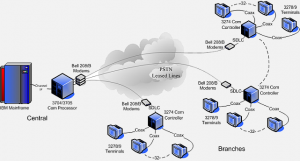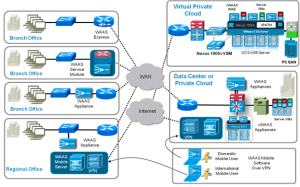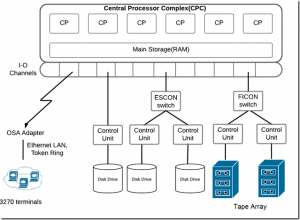“The past is never dead. It’s not even past.” — William Faulkner
Networking which is built on open standards is steadily moving to closed and proprietary protocols and going back to the past of mainframes with closed architectures and technologies. With Massively Scalable Data Centers (MSDC) the compute and storage resource are increasingly being connected in proprietary ways. The networks and protocols in these MSDCs is becoming proprietary and potentially moving away from the open TCP/IP standards. And that is a very worrisome trend, not speaking as a vendor but as a networking technologist, who has been in this industry for over 20 years. Let me explain why.

The rise of MSDCs and the growing IaaS (Infrastructure as a Service) from the likes of Amazon, Microsoft, Google is well understood. This IaaS trend is causing more and more enterprises to move their infrastructure into these clouds, instead of buying and maintaining them. Obviously this is affecting networking infrastructure vendors, like Cisco, Juniper et al, and also managed service providers. The effect on infrastructure vendors is simple: their TAM is shrinking, and rapidly so. For managed service providers, the need for rich networking services, when enterprises maintained their own infrastructure, is dwindling rapidly as well. With IaaS, enterprises just need a simple connection to get to the Amazon, Microsoft and Google clouds and do not heavily depend on managed service providers. Usually the service providers such as AT&T, Verizon, Comcast are also managed service providers and are increasingly becoming cloud service providers as well to mitigate this effect and still be relevant to these enterprise customers. But, how is this making networking closed off?
Well, MSDCs are like super-computers or mainframes and enterprises connecting to them are like terminals. Figure 1 of an IBM mainframe and its connected terminals paints the picture of what mainframe computing was like a couple of decades ago.

The current enterprise IaaS branch connectivity picture looks like this now as shown in Figure 2, with the PSTN leased lines being replaced by the WAN/Internet and the terminals replaced by BYOD. Further, the Data Center is moving from privately owned to being more and more in the Amazon, Microsoft and Google clouds, especially for small and medium enterprises.
Now, these MSDCs are where the compute and storage resources are highly concentrated and networking is a way to connecting them all together to run business applications, to put it very simply. In essence an MSDC is a super-computer. Historically, super-computer and mainframe architectures are shown in Figure 3.

The compute and storage resources are connected via internal memory switches and I/O channels (with their own proprietary protocols) to optimize for gigaflops and petaflops of capacity for applications. These memory switches and I/O protocols created the competitive advantage for the firms creating these mainframes which were optimized for hungry applications such as airline/rail reservations, weather prediction and other massive scale applications.
Does this ring a bell with what MSDC are trying to do today with big-data and real-time analytics via the web?
In my next blog, I will go into more details on how MSDCs networks are becoming proprietary.


CONNECT WITH US